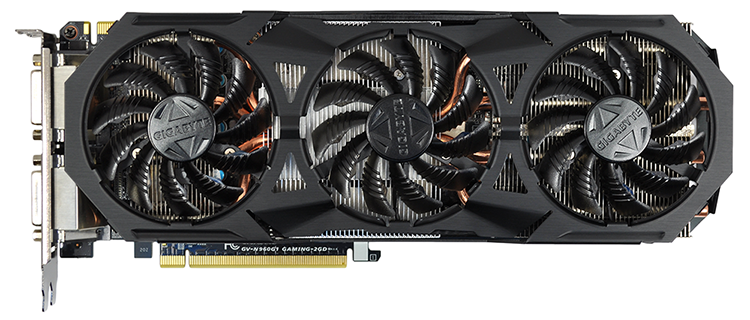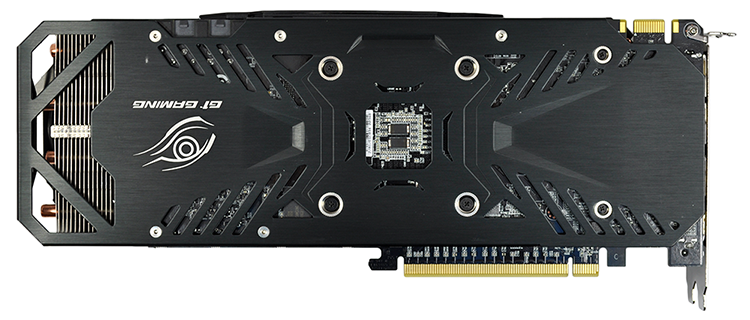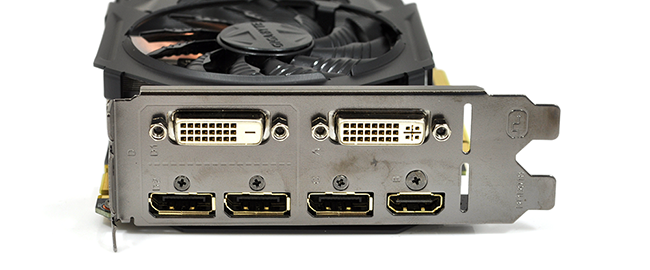Introduction
We now know that Nvidia's GeForce GTX 960 harbours no high-end aspirations. The latest addition to the 900-series range is a distinctly mid-range part that, due primarily to frame buffer limitations, is aimed squarely at 1080p gaming. Heck, even two together in SLI aren't able to gun for the high-end of the market.
Taking the composition of the Maxwell GM206 GPU into account, HEXUS is of the opinion that partners should be looking to create small, energy-efficient GTX 960 boards that are practically silent during use and priced as close to the £150 mark as possible. Such a board, would, we feel, be ideal for HTPC usage or as an upgrade for an older PC.
But taking the small, quiet and efficient approach is easier said than done, particularly for add-in-board partners who have been accustomed to repurposing their high-end coolers throughout a product range.
Take, for example, Gigabyte's GeForce GTX 960 G1 Gaming. Priced at an ambitious £195 (22 per cent more than reference), this is a mid-range board outfitted with the same extreme WindForce cooler as the company's high-end GTX 980.
Touting a 300W cooling capacity, the extravagant triple-fan heatsink appears to be at odds with the underlying GPU's 120W TDP, and it has the unwanted effect of increasing board length dramatically. GTX 960 G1 Gaming measures a massive 300mm from end to end, making it 83mm longer than, say, the Asus GTX 960 DirectCU II, and bigger than many GTX 980s.
A modern-day, mid-range GPU needn't be this hefty, but to Gigabyte's credit, the G1 Gaming is impressively built. The cooler shroud is made of metal to give a quality look and feel, there's a metal backplate covering the black PCB, the internal power design has been upgraded from three to six phases, and four 6mm heatpipes navigate the giant slab of aluminium fins.
Pushing the boat out in every conceivable way, the WindForce logo across the top carries a blue backlight and is flanked by 'Silent' and 'Stop' indicators that illuminate when the fans turn off. By default, Gigabyte has the fans set to spin up when GPU temperature rises above 50ºC, and they come to a stop when temperature drops back down below 35ºC.
More is better is the G1 Gaming philosophy, so it's no surprise to find that this is one of the first (perhaps only?) GTX 960s to require dual six-pin PCIe power connectors. Gigabyte reckons this configuration guarantees higher overclocks and stable boost frequencies, though the heightened requirement does come at the expense of compatibility - you'll need a PSU with multiple PCIe power cables to even consider this card.
The sheer scale of the cooler intimates sky-high shipping frequencies, but that surprisingly isn't the case. Gigabyte has base and boost clocks bumped-up to 1,241MHz and 1,304MHz, respectively, while the 2GB frame buffer operates at a reference 7,012MHz. This isn't the highest-clocked card we've seen; that accolade currently goes to Palit's Super JetStream.
Leaving no stone unturned, the default selection of five I/O ports - DVI, HDMI 2.0 and 3x DisplayPort 1.2 - has also been augmented with the addition of a second DVI port. Only four of the six can be used concurrently, and if we were being overly critical, we'd say that the addition of another DVI output blocks the area in which there'd usually be a vent. Though, we don't expect heat buildup to be a problem for the GTX 960 G1 Gaming.
On the face of it, Gigabyte's board is better than reference in just about every way, but is the GM206 GPU deserving of such indulgence, or will the G1 Gaming prove to be a sheep in wolf's clothing? Only one way to find out.













